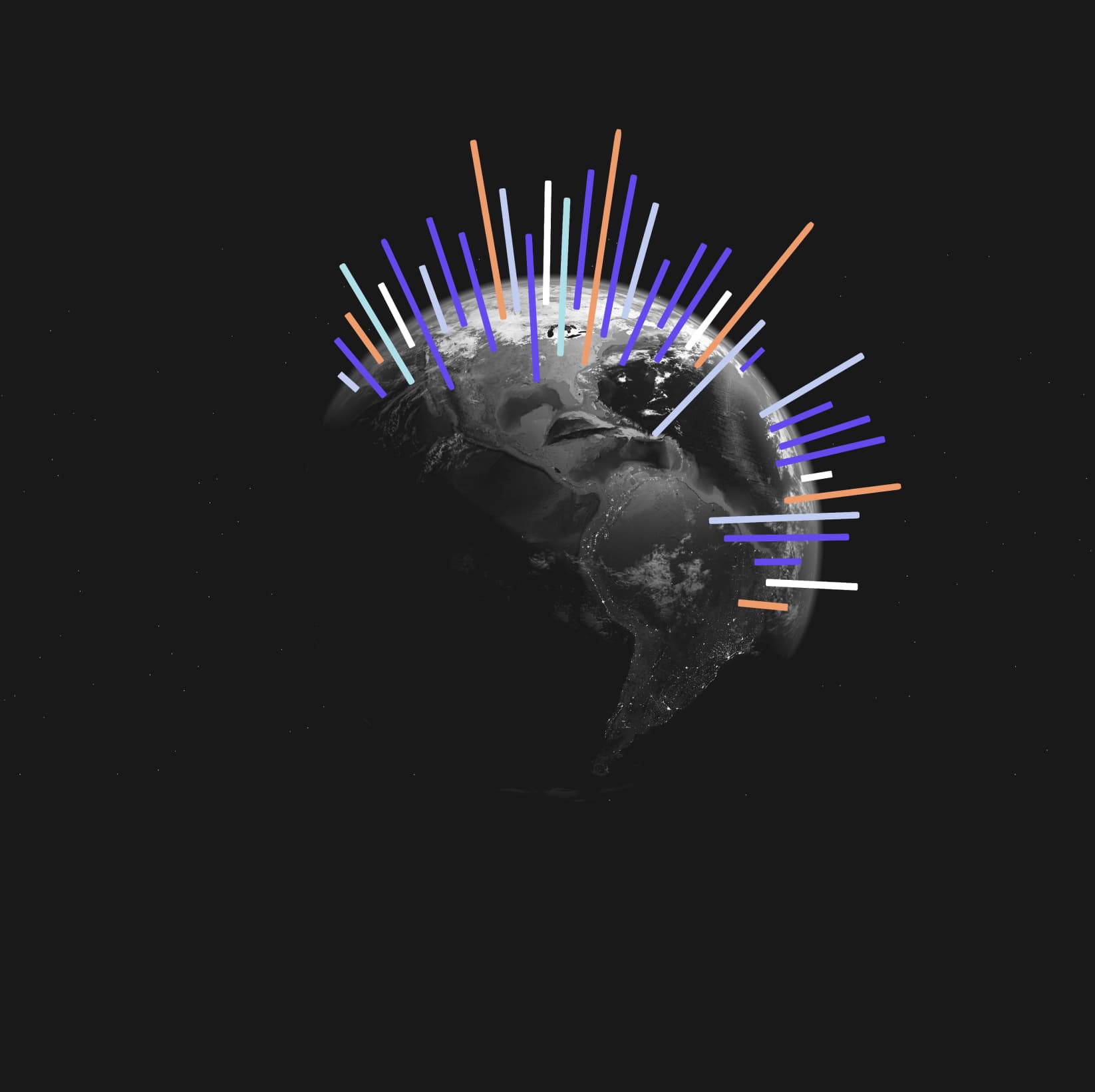Consumer trends, the ever-changing patterns of consumer behaviour and preferences, form the very heart of business strategies. These trends not only dictate what consumers desire today but also hold the key to what they will seek tomorrow. From eco-conscious sustainability to the voice-driven world of AI commerce, the consumer trends of 2030 are bound to be as diverse as they are impactful.
“The future of business belongs to those who can navigate uncertainty, embrace change, and leverage data-driven insights to make informed decisions. Adaptability and agility will be the keys to success.” – Satya Nadella, CEO of Microsoft
Embracing these emerging trends is not a mere choice but an imperative for businesses and marketers seeking to remain relevant and competitive in the coming decade. The stakes are high, and the race to understand, anticipate, and respond to these trends has never been more crucial. Gone are the days of relying solely on intuition or guesswork. As consumer trends become more complex and multifaceted, market intelligence platforms like Trendata become the key success tool for marketers and businesses looking to find success now and in the future.
The Future of Consumer Trends
Emerging Trends
The world of consumer trends is on the cusp of a transformative shift, and by 2030, several key trends are set to shape the way businesses and marketers engage with consumers. Understanding these emerging trends will be crucial for staying ahead of the curve and tapping into new opportunities. Let’s dive into five major consumer trends that will dominate the market in the coming decade:
Sustainable Consumption and Ethical Brands
Growing environmental awareness has led to increasing concerns about climate change and the environmental impact of consumption. As a result, consumers are prioritising ethical business practices and supporting brands with social responsibility initiatives. Sustainability and ethical values are becoming crucial factors influencing consumer choices in the marketplace.
Sustainable Packaging Innovations: By 2030, sustainable packaging will become a major focus for businesses. Companies like Lush have introduced “naked” products, eliminating traditional packaging and opting for innovative alternatives like solid shampoo bars and reusable containers.
Personalisation and Customisation in Product Offerings
Advancements in technology, particularly in data analytics and AI, have enabled businesses to utilise advanced algorithms for personalised experiences beyond data-driven recommendations. This move towards hyper-personalisation allows businesses to understand individual preferences and behaviours, offering tailored solutions that resonate with each consumer. Such technological progress is reshaping the consumer experience and driving customer engagement.
Augmented Reality (AR) and Virtual Reality (VR) Integration
Consumers’ desire for engaging brand experiences has led to a growing interest in immersive technologies. Businesses are embracing augmented reality (AR) and virtual reality (VR) to create interactive and captivating encounters with their brands. By offering immersive experiences, companies can enhance engagement, leaving a lasting impact on their audience and building stronger connections with consumers.
AR Changing Retail Experience: Augmented Reality will redefine the retail experience. In the future, consumers will use AR to try on makeup, virtually test furniture in their homes, and even see how clothes fit before making a purchase.
Voice Commerce and AI-driven Shopping
The growth of voice-enabled devices and AI assistants has become a prominent trend in consumer behaviour. The increasing adoption of smart speakers and virtual assistants signifies the integration of voice technology into everyday life. From performing tasks to making purchases, consumers are embracing voice-enabled technologies for their convenience and seamless user experience.
Subscription-Based Models and Recurring Revenue Streams
The subscription economy is flourishing across diverse industries, with the rising popularity of subscription services. Consumers are increasingly drawn to the convenience and personalised offerings of subscription-based models. This shift in consumer behaviour reflects a growing preference for flexible and customised experiences, fostering customer loyalty and recurring revenue streams for businesses.
As marketers prepare for the consumer landscape of 2030, they must consider these emerging trends as opportunities to innovate, adapt, and connect with their audience on a deeper level. The future belongs to those who embrace change and use these trends as catalysts for business growth and success. By staying agile and forward-thinking, marketers can navigate the exciting challenges and opportunities that lie ahead.
Predictions for Navigating Trends By 2030
Let’s now explore five predictions to help marketers successfully navigate the identified future consumer trends:
Embracing Sustainability: Eco-Friendly Initiatives and Green Products
Prediction: By 2030, sustainability will be a non-negotiable factor in consumer decision-making. Marketers must incorporate eco-friendly initiatives and promote green products to meet the demands of environmentally conscious consumers. Companies that prioritise sustainable practices and communicate their commitment to environmental stewardship will build trust and loyalty with a growing audience of eco-conscious customers.
Customer-Centric Personalisation: Leveraging Data for Tailored Experiences
Prediction: Personalisation will move beyond generic recommendations to become highly customer-centric. By 2030, advanced AI algorithms will analyse vast datasets to understand individual preferences and anticipate consumer needs. Marketers must invest in data analytics and customer journey intelligence to deliver hyper-personalised experiences at every touchpoint, ensuring customers feel valued and understood.
Adopting AR and VR Technologies: Enhancing Consumer Engagement
Prediction: Augmented Reality (AR) and Virtual Reality (VR) will reshape the way consumers interact with brands and products. By 2030, businesses that adopt AR and VR technologies will be better positioned to create immersive brand experiences. Marketers should explore AR and VR applications that allow customers to visualise products, try them virtually, and engage with interactive content, fostering deeper connections and emotional engagement.
Virtual Reality Fashion Shows: In the future, fashion shows are expected to be taken to a whole new level with the adoption of Virtual Reality (VR) technology. Brands like Tommy Hilfiger have already experimented with VR to provide consumers with a front-row experience from the comfort of their homes.
Voice-Optimised Presence: Capturing the Voice-Commerce Market
Prediction: Voice commerce will witness exponential growth as consumers embrace the convenience of voice-enabled shopping. By 2030, marketers who optimise their online presence for voice search will gain a competitive edge in the voice-commerce market. Understanding voice-driven customer behaviour and using AI-driven insights will enable businesses to tailor their offerings and messaging to effectively reach voice-activated shoppers.
Subscription Business Models: Fostering Customer Loyalty and Retention
Prediction: Subscription-based models will become the norm across various industries. By 2030, businesses that offer subscription services will benefit from increased customer loyalty and recurring revenue streams. Marketers should explore opportunities to introduce subscription-based offerings, focusing on value creation and continuous engagement to foster long-term customer relationships.
Subscription Economy Growth: The subscription-based economy is booming, and it’s not just limited to streaming services. By 2030, more products, from clothes to groceries, will be offered as subscriptions, providing convenience and cost savings for consumers
To navigate the consumer trends of 2030 successfully, marketers must be proactive in their approach, embracing innovation and technology to meet evolving consumer expectations. By embracing sustainability, prioritising customer-centric personalisation, adopting AR and VR technologies, optimising their presence for voice commerce, and exploring subscription-based models, marketers can future-proof their businesses for success in the ever-changing consumer landscape. By staying ahead of the curve and leveraging these predictions, marketers can confidently lead their organisations to thrive in the dynamic world of 2030’s consumer trends.

The Value of Market Intelligence
In the dynamic landscape of consumer trends, market intelligence plays a pivotal role in helping businesses and marketers make informed decisions. By understanding customer behaviour and preferences, businesses can gain a competitive advantage and tailor their strategies to meet evolving consumer demands. Let’s explore the value of market intelligence and how it can empower marketers to navigate the consumer trends of 2030:
Understanding Customer Journey Intelligence
To succeed in a customer-centric world, marketers must gain a deep understanding of the customer journey. Customer journey intelligence provides valuable insights into how consumers interact with a brand throughout their buying process. Here’s how marketers can leverage customer journey intelligence:
Mapping the Customer Journey for Insights
By 2030, the customer journey will become even more complex, involving multiple touchpoints across various channels. Marketers must map the customer journey to identify key touchpoints and moments of truth where customer decisions are influenced. Understanding this journey empowers marketers to optimise interactions and enhance the overall customer experience.
Identifying Touchpoints and Pain Points
Customer journey mapping will reveal crucial touchpoints and pain points that customers encounter during their interactions with a brand. Marketers can identify pain points and work towards resolving them, creating a seamless and satisfying customer experience. By addressing pain points, businesses can improve customer satisfaction and build brand loyalty.
Leveraging Data Analytics for Data-Driven Customer Insights
Advanced data analytics and AI will play a significant role in providing real-time customer insights by 2030. Marketers can leverage data analytics to track consumer behaviour, preferences, and engagement patterns, enabling them to make data-driven decisions and respond quickly to changing consumer trends.
“The business landscape of 2030 will be shaped by technology, sustainability, and the human element. Companies that embrace innovation, focus on sustainability, and prioritise their people will thrive in the future.”
– Richard Branson, Founder of Virgin Group
RELATED: 4 Key Brand Insights That Can Transform Your Business Strategy
Leveraging Customer Lifecycle Segmentation
Understanding the customer lifecycle is critical for marketers to deliver targeted and relevant messaging to different segments of their audience. Here’s how marketers can leverage customer lifecycle segmentation:
Understanding Customer Lifecycle Phases
By 2030, customer lifecycle segmentation will be more nuanced, with customers moving through various phases at different speeds. Marketers should segment their audience based on where customers are in their journey, such as the acquisition, onboarding, engagement, retention, and re-engagement phases.
Personalising Strategies for Each Segment
Personalisation will be a key driver of customer loyalty and engagement. By understanding the unique needs and preferences of different customer segments, marketers can tailor their strategies and communications to resonate with each group, thereby increasing the effectiveness of their marketing efforts.
Fostering Long-term Customer Relationships
In 2030, businesses will recognise the importance of fostering long-term customer relationships over short-term transactions. By segmenting customers based on their lifecycle phase, marketers can implement retention strategies that strengthen customer loyalty and drive repeat business.
RELATED: Consumer Trends 2025: Anticipating the Future through Advanced Customer Segmentation Analysis
The Role of Trendata as Your Market Intelligence Partner
In the era of data-driven decision-making, having a reliable market intelligence partner is essential for marketers. Trendata is at the forefront of providing actionable insights to navigate the ever-changing consumer landscape. Here’s how Trendata can empower marketers:
Trendata’s Services and Capabilities
Trendata offers a comprehensive suite of market intelligence services designed to support businesses in understanding consumer trends and preferences. From advanced data analytics to market demand and customer segmentation analysis, Trendata provides a wide range of solutions to help marketers make informed decisions.
Accessing Timely and Actionable Insights
Trendata delivers data-driven market insights, enabling marketers to stay ahead of emerging trends and swiftly respond to changing consumer behaviours. With access to timely and actionable data, businesses can make proactive decisions and gain a competitive edge.
Utilising Data-Driven Decision Making
Trendata’s platform leverages sophisticated AI algorithms to analyse over 5 billion search queries daily and provide data-driven recommendations. By utilising data-driven decision-making, marketers can make well-informed choices that drive business growth and success.
RELATED: Discovering the Best Consumer Insights Companies for Your Business
Market intelligence is an invaluable asset for marketers seeking to navigate the consumer trends of 2030. Understanding the customer journey, leveraging customer lifecycle segmentation, and partnering with market intelligence providers like Trendata will empower marketers to make data-driven decisions, foster long-term customer relationships, and seize opportunities in the ever-evolving consumer landscape. By embracing market intelligence, marketers can confidently lead their businesses towards a successful and prosperous future.

Final Thoughts…
The landscape of consumer preferences is constantly shifting, and the trends of 2030 promise to revolutionise the way businesses engage with their audience. From this perspective, the significance of market intelligence cannot be overstated.
Armed with actionable insights, marketers can navigate the waters of consumer trends, anticipate shifts in consumer behaviour, and stay one step ahead of the competition.
Now is the time to equip yourself with market intelligence and embrace technological innovation.







